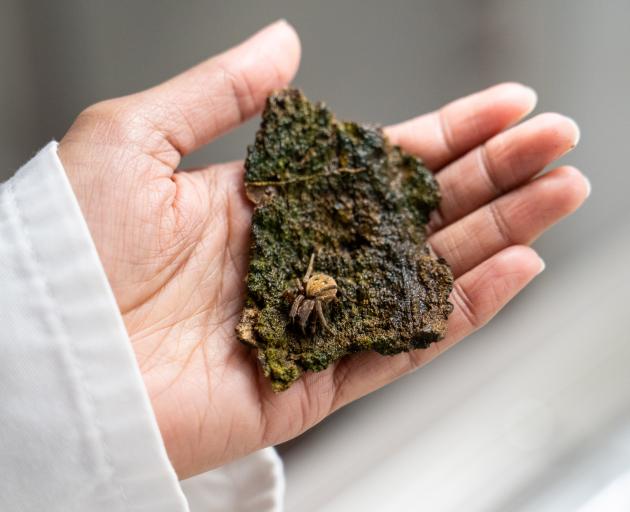Science
Parasitic Worms Transform New Zealand Spiders into ‘Zombies’

A startling ecological phenomenon is unfolding in New Zealand, where parasitic worms known as mermithids are turning spiders into what researchers describe as “zombies.” Usha Mendis, a PhD student at Lincoln University, is investigating this unsettling twist of nature and its implications for local ecosystems.
Mendis’s research focuses on how these parasitic nematodes infect various invertebrates, including spiders, caddisflies, mayflies, and grasshoppers. She has identified three distinct types of spiders carrying the mermithids, which pose a significant threat to the region’s biodiversity. “New Zealand has a large number of endemic spiders; over 90% of them are unique to the country,” Mendis explained. “If something were to happen to them, it would not be good for our biodiversity.”
The impact of the mermithids on spider populations is alarming. Once infected, spiders undergo profound physical changes that ultimately lead to their demise. Mendis noted that infected spiders often develop larger limbs and abnormal body shapes, making them appear zombie-like. “Their legs get shorter but thicker, and their abdomens swell,” she said. “They look very different from their healthy counterparts.”
Determining whether a spider has been parasitized is challenging. The only definitive sign occurs when the spider dies and the nematode emerges, ready for the next stage of its life cycle. While researchers understand how the nematodes exit their hosts, the entry process remains a mystery that Mendis aims to unravel.
The lifecycle of mermithids is intricately linked to water. As they grow inside their host, they drive the spiders toward moist environments, which facilitates the nematodes’ reproduction. “They consume the energy and nutrients of the host, growing inside it,” Mendis explained. Once in a wet environment, the nematodes can mate, lay eggs, and continue their cycle. Unfortunately, this often leads to the drowning of the infected spiders.
Mendis is employing water traps to collect these nematodes, an approach that reflects the harsh realities of their lifecycle. Since the first report of mermithids in New Zealand occurred just 35 years ago, there remains much to learn about their relationship with local spider species.
In her ongoing research, Mendis urges the public to reassess their perception of spiders. Despite their creepy appearance, these arachnids play an essential role in the ecosystem. “Spiders may look disruptive and creepy, but they’re not the enemy,” she asserted. “They’ve got their own problems to deal with.”
As Mendis continues her investigation into these parasitic worms, the ecological balance in New Zealand hangs in the balance, highlighting the interconnectedness of species and the importance of preserving biodiversity.
-

 World4 months ago
World4 months agoTest Your Knowledge: Take the Herald’s Afternoon Quiz Today
-

 Sports4 months ago
Sports4 months agoPM Faces Backlash from Fans During Netball Trophy Ceremony
-

 Lifestyle4 months ago
Lifestyle4 months agoDunedin Designers Win Top Award at Hokonui Fashion Event
-

 Entertainment4 months ago
Entertainment4 months agoExperience the Excitement of ‘Chief of War’ in Oʻahu
-

 Sports4 months ago
Sports4 months agoLiam Lawson Launches New Era for Racing Bulls with Strong Start
-

 World5 months ago
World5 months agoCoalition Forms to Preserve Māori Wards in Hawke’s Bay
-

 Health4 months ago
Health4 months agoWalking Faster Offers Major Health Benefits for Older Adults
-

 Lifestyle4 months ago
Lifestyle4 months agoDisney Fan Reveals Dress Code Tips for Park Visitors
-

 Politics4 months ago
Politics4 months agoScots Rally with Humor and Music to Protest Trump’s Visit
-

 Top Stories5 months ago
Top Stories5 months agoUK and India Finalize Trade Deal to Boost Economic Ties
-

 Health2 months ago
Health2 months agoRadio Host Jay-Jay Feeney’s Partner Secures Visa to Stay in NZ
-

 World5 months ago
World5 months agoHuntly Begins Water Pipe Flushing to Resolve Brown Water Issue









